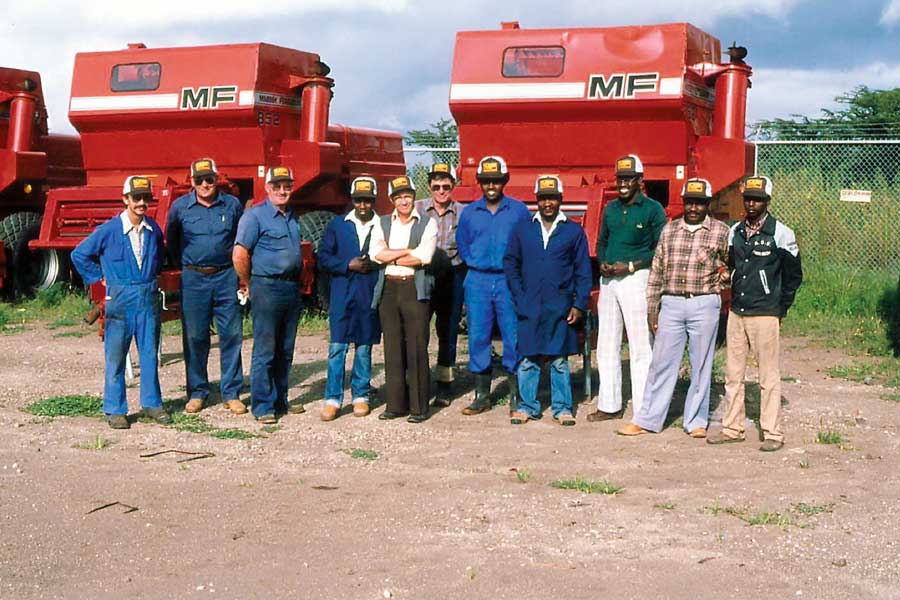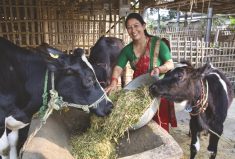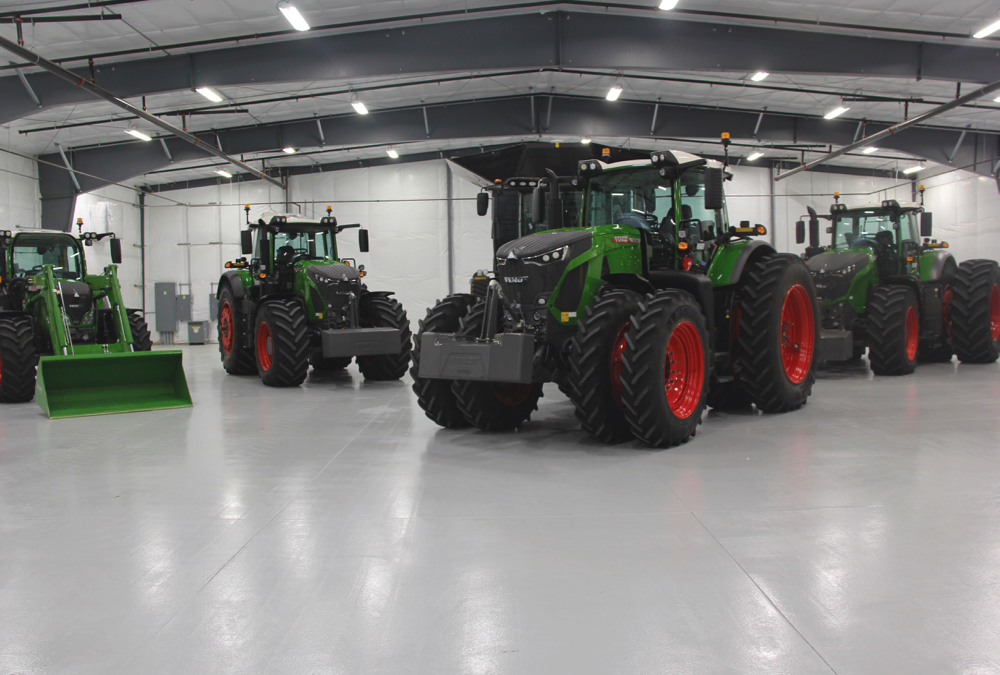In the February 4 edition of Country Guide, you read about Canada’s latest $13 million in agricultural development aid being invested in Ukraine to create a new generation of farm co-operatives under the Canadian International Development Agency (CIDA).
While the Ukraine project represents a significant financial investment, CIDA has funded much larger agricultural development programs in the past, most notably one in Africa in which Canadian-built machinery played a key role.
More from the Country Guide website: Ottawa’s gamble
Read Also

A season of trial and colour
Following a Saskatchewan flower farmer through the seasons.
In a long-term project in Tanzania that ran from 1968 to 1993, CIDA invested a total of nearly $78 million to create a state-of-the-art wheat farm. It was based on the western Canadian model of broad-acre production using large-scale machinery, and the plan was to hand over management of the farm within a few years of it becoming fully operational.
In 1987, during phase two of the project, a shipment of Massey-Ferguson 852 combines and Versatile four-wheel drive tractors arrived on the CIDA farm, which was set up and staffed by experienced Canadian prairie farmers.
“A block of land, about 3,000 acres, actually very close to Mount Kilimanjaro, was made available west of Arusha, which is the second-biggest town in Tanzania,” recalls Dave Nicolle, an engineer who worked for Massey-Ferguson’s combine assembly plant when it was located in Brantford, Ont. He was one of a team of engineers sent to the farm by Massey-Ferguson to assemble the combines and see they were operating properly.
“Everything else came from Canada,” Nicolle says. “The pre-fab houses, even the furniture came from Ikea (through Canada). There was no hydro so they brought 110-volt generators. But the rest of the country was 220 (volt). So it was uniquely Canadian.”
“There were a lot of Versatile four-wheel drive tractors from Winnipeg. Because western Canadian farmers were used to pull-type combines, they asked for pull types, which we made. They were 852s. At least half a dozen were sent from the (Brantford) factory.”
“There were brutal roads getting from Arusha out to the farm,” Nicolle remembers. “Something that would take an hour in North America took four hours. The only vehicles that would stand up in that part of the world were (Toyota) Land Cruisers. I remember they had about 34 of them that the Canadian government had bought to provide transportation on the ground.”

On the farm, CIDA had built top-quality facilities to keep machines operating, along with an ample supply of spare parts. “They had a beautiful workshop complex,” says Nicolle. “The spare parts in it were unbelievable. They even had spare engines for the Versatile tractors.”
But despite the massive investment and the proven production capacity of the farm while under the management of CIDA staff, it ended in failure after it was turned over to locals.
In response to a Country Guide request for information, the federal government described the result this way: “An important lesson learned from this project was that Tanzania’s dependence on foreign machinery and expertise, coupled with the liberalization of the Tanzanian economy, meant that the cost of the wheat production and the approach of tying development assistance to the use of foreign equipment was not sustainable.”
But a dependence on foreign-built machinery wasn’t — and still isn’t — unique to Tanzania. Other countries face the same situation and still succeed. And the farm’s output had been significant. “(It) produced import savings of $140 million over the lifespan of the project,” noted the government response. “Significantly, during the drought in 1992, Tanzania was the only Southern African state that did not require food aid.”
Although the government also fingers dependence on foreign expertise as a factor contributing to the farm’s demise, it acknowledges the farm contributed significantly to local skills, “…training more than 120 Tanzanians in all aspects of wheat production, and 150 mechanics gained skills and experience at the maintenance workshop.” So, clearly, enough expertise was created within the country to continue the farm.
Those familiar with conditions in Africa aren’t surprised the CIDA project failed after Canadian managers left. They suggest the failure was inevitable because of widespread poverty, cultural differences and political corruption.
Those trying to mechanize the region now have devised an approach they think takes those factors into account.
Martin Richenhagen, chairman and CEO of AGCO, has been one of the driving forces working to expand agriculture on that continent, and he is well versed in the challenges.
“When an African farmer gets a tractor through an aid program, and they get it for free, those are very poor guys,” Richenhagen said during a 2012 interview in Jackson, Minnesota. “So they think about it. Well, what is better? Is it better to start to work hard or is there a better way to make money? So the first thing is they sell the seat. They strip the tractor down to the parts. After about a year the tractor is completely gone and you find the engine on a power generator or a water pump or something like that. So this brought us to the problem, how do we do better?”
Successful development under those conditions requires a different tack than the CIDA program took. The overall approach to increasing mechanization there now is very different. And global brands including AGCO are involved in the effort.
It goes without saying that aside from the moral obligation to help eliminate hunger, there is enormous potential for future profits if they succeed.
“We try to do two things,” says Richenhagen. “One is we invest in, we call them, demonstration farms — farms which are managed by Westerners where we can train customers and dealers in mechanized farming. It’s different than what we’re used to here. It’s like our farming used to be in the ’50s or ’60s. We do that with the help of the seed and chemical guys as well.
“The second thing is we also use those demo farms as machine stations. We don’t sell a tractor anymore, but we rent it to a farmer for a day. He pays for a day. He has to bring it back, clean it, check the oil. He has to do the little service. So we make sure the tractor stays together. We force them into a discipline.”
But a major cultural impediment to development revolves around the fact that women are often the ones expected to provide labour, not men. “You need to understand the African culture,” Richenhagen explains. “In most of Africa, work is only for women.” However, they sometimes can’t reap the benefits of their own efforts.
That factor wasn’t lost on delegates at the 2013 AGCO Africa Summit, Richenhagen’s annual event held in Berlin in January that brings leaders together to strategize on how to stimulate agricultural development.
“…the rule of law is important as well, in order (for women) to be able to acquire land titles,” suggested Gudrun Kopp, parliamentary state secretary to the federal minister of economic co-operation and development in Germany, during her address at the summit. “…they are the ones driving development forward. It is thus important that they are able to inherit a piece of land.”
It’s something many women still can’t do.
Now into its third year, the annual Africa Summit has helped blend and co-ordinate public and private sector initiatives. Despite that, the challenges ahead on that continent are formidable.
“This is what we’re doing, and we have a good plan,” says Richenhagen. As CIDA’s earlier effort showed, anything less than that just isn’t enough.
















